Marvel Feature: Red Sonja 3
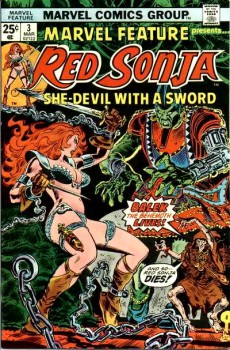 This issue begins with Sonja being chased by a militia. Apparently, robbing men on the highways is illegal even if the men you rob are other highway robbers. I’m curious who reported her, but that’s neither here nor there. By the second page, she has to make a Dukes of Hazzard-style jump over a ravine and on the third page, doesn’t make it. As Sonja and her horse fall into the chasm, her last words are, “Conan … I never … let you …” before she breaks her neck on the rocks below. The militia mutter something about it all being a terrible waste before riding off.
This issue begins with Sonja being chased by a militia. Apparently, robbing men on the highways is illegal even if the men you rob are other highway robbers. I’m curious who reported her, but that’s neither here nor there. By the second page, she has to make a Dukes of Hazzard-style jump over a ravine and on the third page, doesn’t make it. As Sonja and her horse fall into the chasm, her last words are, “Conan … I never … let you …” before she breaks her neck on the rocks below. The militia mutter something about it all being a terrible waste before riding off.
At this point, we learn that the fall into a chasm was simply an illusion cast by the sorceress Neja, an illusion so powerful that even Sonja thought for a moment that she’d died (which means that her horse must be freaking out). Once they’re safe in Neja’s cave (or as safe as one can be in a witch’s lair), she explains the history of the key (stolen from a brigand last issue) and what it opens. Apparently, Neja’s great-grandfather created a giant metal idol in the shape of a dead king and animated by the demon Belak. The key fits into a slot in the giant’s back and is the only way to turn it on or off.
One drugged drink later, Sonja is chained to a cave wall as Neja winds up the big green robot and orders it to slay her. Tricking it into smashing the chains that bind her, Sonja spends several pages dodging the construct, killing the witch in the process, before finally turning the key again and removing it from Belak’s back.
It’s a nice wrap-up to last issue, although it’s hard to imagine Belak giving anyone the power to take over the world if it has such an obvious and easily exploited weakness as a key in its back. Frank Thorne’s artwork continues to shine. And we get another hint this time around that Red Sonja might think of Conan as “more than a friend.”
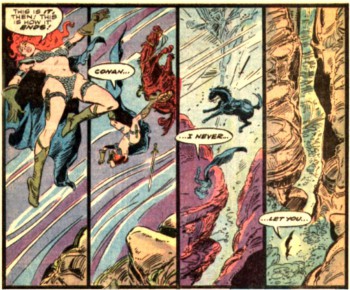
I believe this is the first time Red Sonja faces a genuinely overwhelming supernatural threat on her own. Until now, she’s faced either human foes or received help from Conan. She not only defeats the giant robot (twice), but also kills Neja, all without her weapons (which for some reason are included on the cover, even though chaining someone up without disarming them first doesn’t make a lot of sense).
(originally published March 1976, Marvel Comics) (reprinted January 2007 in Adventures of Red Sonja Volume 1, Dynamite Entertainment)
Next Week: Red Sonja and the Scooby Doo Mystery
 Over the last few years, I’ve been a big fan of Disney/Pixar films, but not so much of the films put out by Disney itself. While I enjoyed Tangled well enough, when compared to the Toy Story franchise or Wall-E, the more mainstream Disney movies just don’t have the same emotional impact.
Over the last few years, I’ve been a big fan of Disney/Pixar films, but not so much of the films put out by Disney itself. While I enjoyed Tangled well enough, when compared to the Toy Story franchise or Wall-E, the more mainstream Disney movies just don’t have the same emotional impact.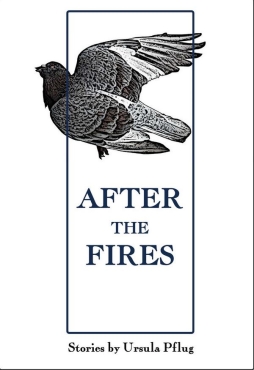 I don’t remember where I first came across Ursula Pflug’s name. I know I’d seen it mentioned in several places before I stumbled across a collection of her short stories, After the Fires, at a recent book sale. From what I’d heard, she was a Canadian writer of literary fantasy, which was enough for me to take a chance on the book. On the whole, I think that was a good call.
I don’t remember where I first came across Ursula Pflug’s name. I know I’d seen it mentioned in several places before I stumbled across a collection of her short stories, After the Fires, at a recent book sale. From what I’d heard, she was a Canadian writer of literary fantasy, which was enough for me to take a chance on the book. On the whole, I think that was a good call.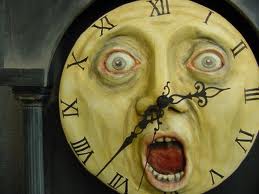 I’m busy.
I’m busy.
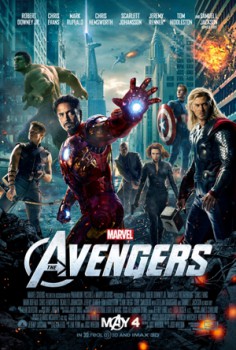 About a month ago, The Avengers
About a month ago, The Avengers 
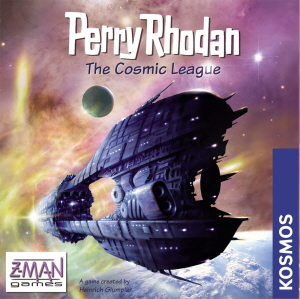
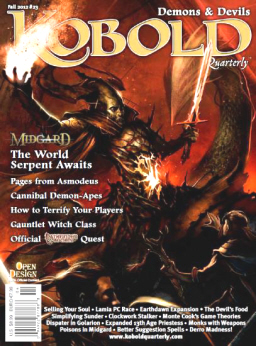
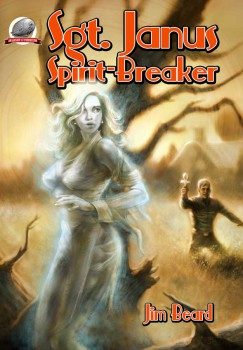 ‘His eyes were icy verdigris, but warm also, and piercing — in a kind way. He was dressed smartly in a long coat of an almost military cut and dark pants with gold piping.’ So writes the narrator of the 2012 story, “The Portobello Cetacean” as she first lays eyes on her host, Sgt. Roman Janus, late of Mount Airy, the man known as the ‘spirit-breaker’.
‘His eyes were icy verdigris, but warm also, and piercing — in a kind way. He was dressed smartly in a long coat of an almost military cut and dark pants with gold piping.’ So writes the narrator of the 2012 story, “The Portobello Cetacean” as she first lays eyes on her host, Sgt. Roman Janus, late of Mount Airy, the man known as the ‘spirit-breaker’.